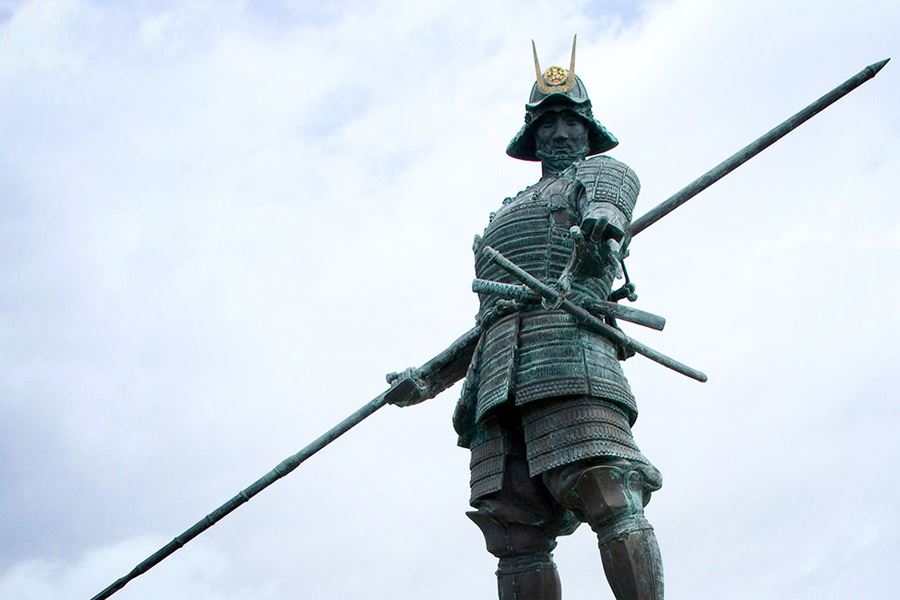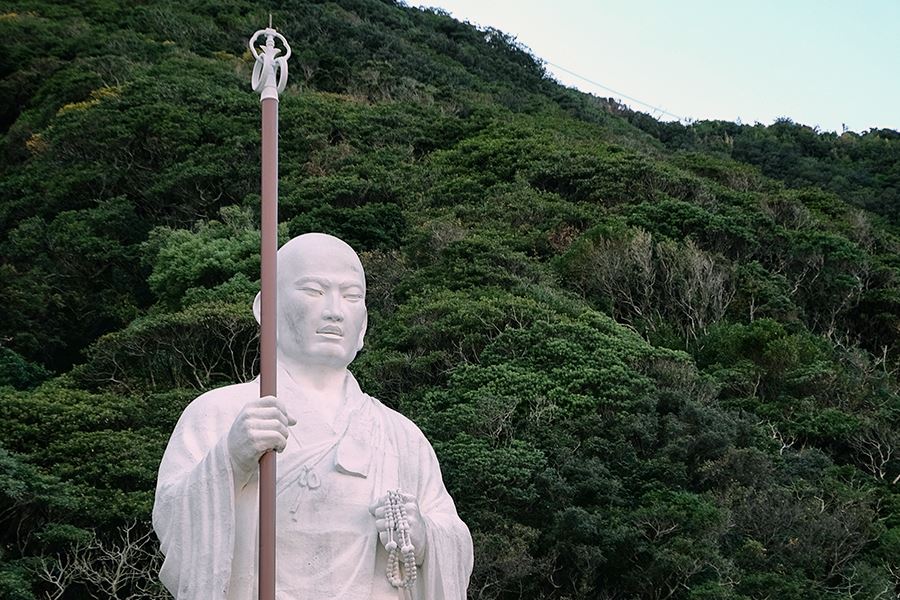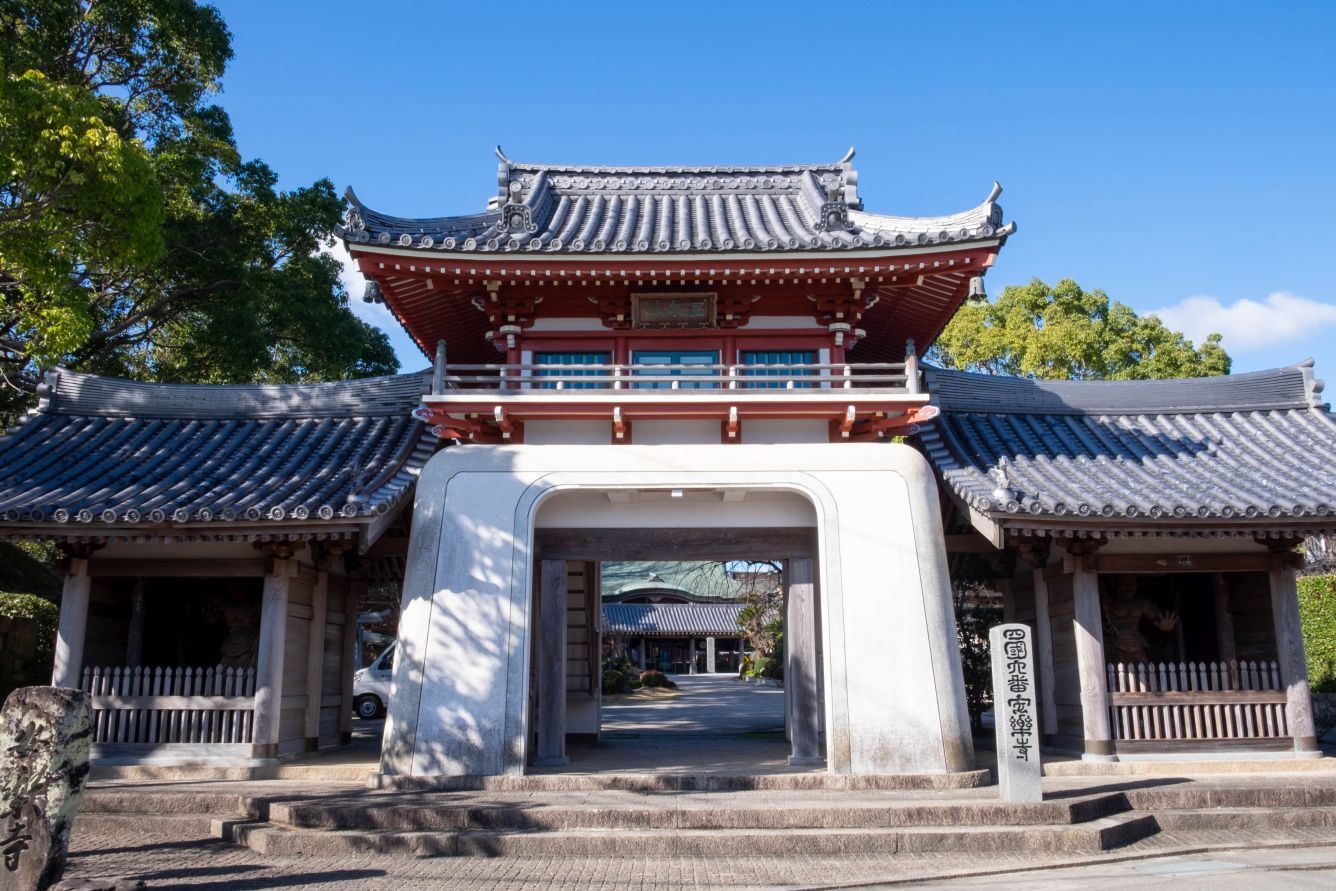Temple 7, Jūraku-ji
Home » Temple 07, Jūraku-ji
Temple 7, Jūraku-ji
Jūraku-ji is temple No. 7 on the Shikoku pilgrimage, or Henro. It stands at the foot of the Sanuki Mountains in the Tokushima rift valley.
What to see
The most conspicuous feature of Jūraku-ji is its two Ryūgū gates. One of these Chinese-style gates is painted vermillion and the other is plain wood. They’re offset and at different heights, creating a very exotic effect. In front of you when you pass through the first, red gate, is a group of Jizō statues called Mizuko Jizō, dedicated unborn children. The second gate is up some steps. You can enter the gate and on its second floor is an altar for performing the Goma ritual, overseen by a fierce red deity.
The temple office and pilgrims’ accommodation is the large white building to the right. To the left is a large double tree, called the parent and child pine. The larger of the two trunks dates back about 300 years. In front of it is a seated Buddha. Further to the left is a large image of Fudō Myōō.
The main hall stands across a small plaza from the main gate. In front of it stands an unusual stone wash basin. On the left side of the veranda is a wooden enclosure housing a jolly Binzuru statue.
Stone steps lead up to the Daishi Hall from the left of the Main Hall. Next to these stairs is a stone Jizō statue in a wooden shelter, renowned for curing blindness.
History
It’s inferred that the temple was located in Dōgahara, about 3 km north of the current location. For a while after its foundation, it was the largest temple complex in the north of Awa province, but in 1528, all the temples were burned down by Chōsokabe Motochika. Fortunately, the chief priest saved the principal idol by carrying it off on his back. The temple was rebuilt at its present location in 1635. In the Meiji period, the main hall was rebuilt, along with the Daishi Hall and guesthouse. In 1994, a fine wooden Main Hall was built.
One of the temple’s antique treasures is a teacup which once belonged to a general named Yukimura Sanada, one of Toyotomi Hideyoshi’s warriors in the 16th century.
Legends
When Kūkai was in the area, he felt the presence of Amida Nyorai and carved the statue of Nyorai as the principal image. He called the temple Komeizan Jūrakuji so that people could obtain the ten lights and shining pleasures for the hardships that human beings can’t avoid such as life, old age, illness, and death.
A stone Jizo statue is said to be most efficacious in curing blindness. The pilgrimage has many temples that are reported to restore eyesight including No. 24 Hotsumisaki-ji, No. 39 Enkō-ji, and No. 52 Taisan-ji.
Information
Name in Japanese: 十楽寺
Pronunciation: jūrakuji
Address: 58, Hokyoden, Donaricho-Takao, Awa City, Tokushima 771-1509
Related Tours

Experience the most beautiful and interesting temples of the Shikoku Pilgrimage in seven days.

A tour for families or friends, staying in the most characterful kominka and ryokan of Shikoku.

Visit the most beautiful and interesting temples of the Shikoku Pilgrimage and walk the toughest trails.






